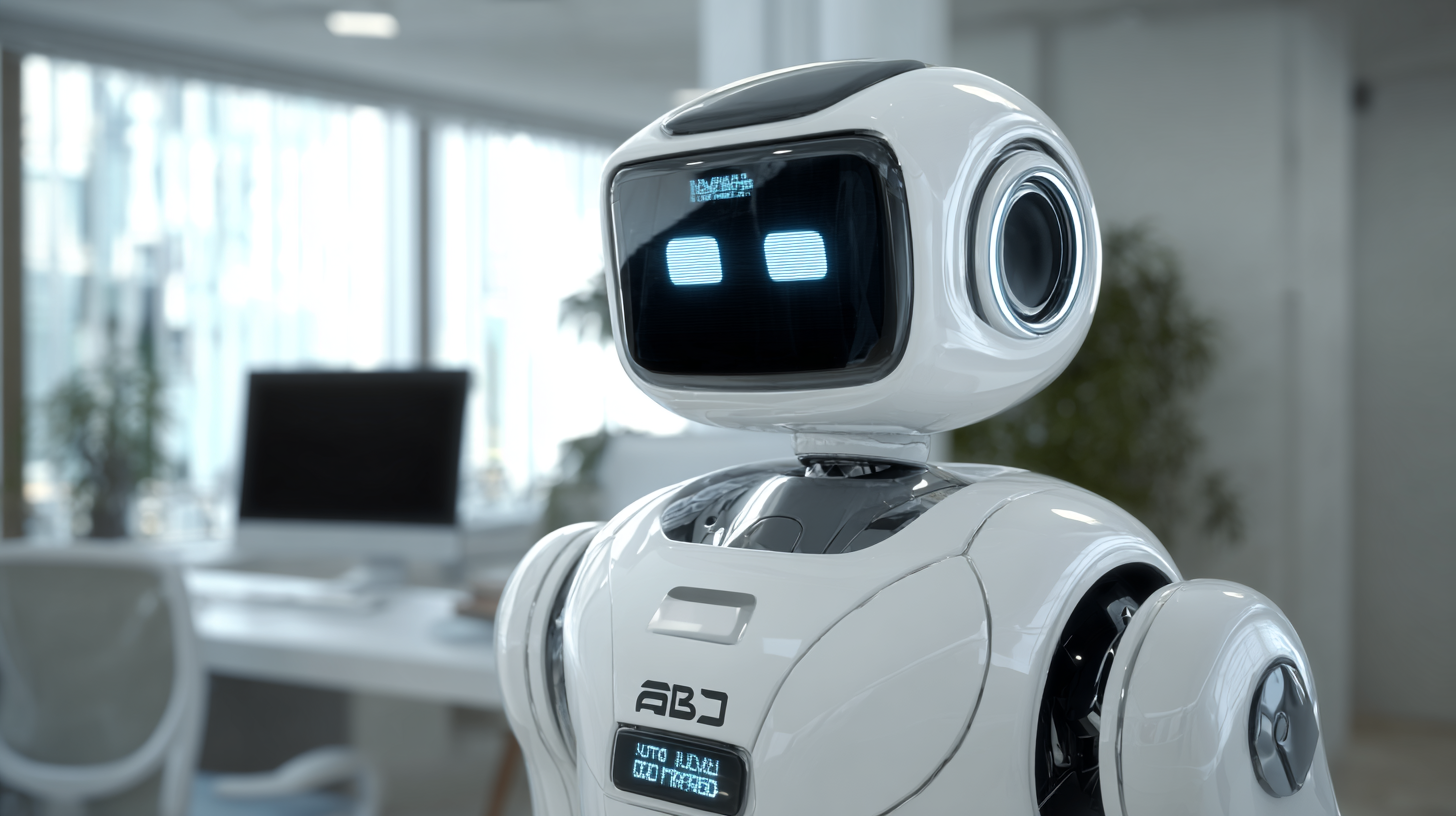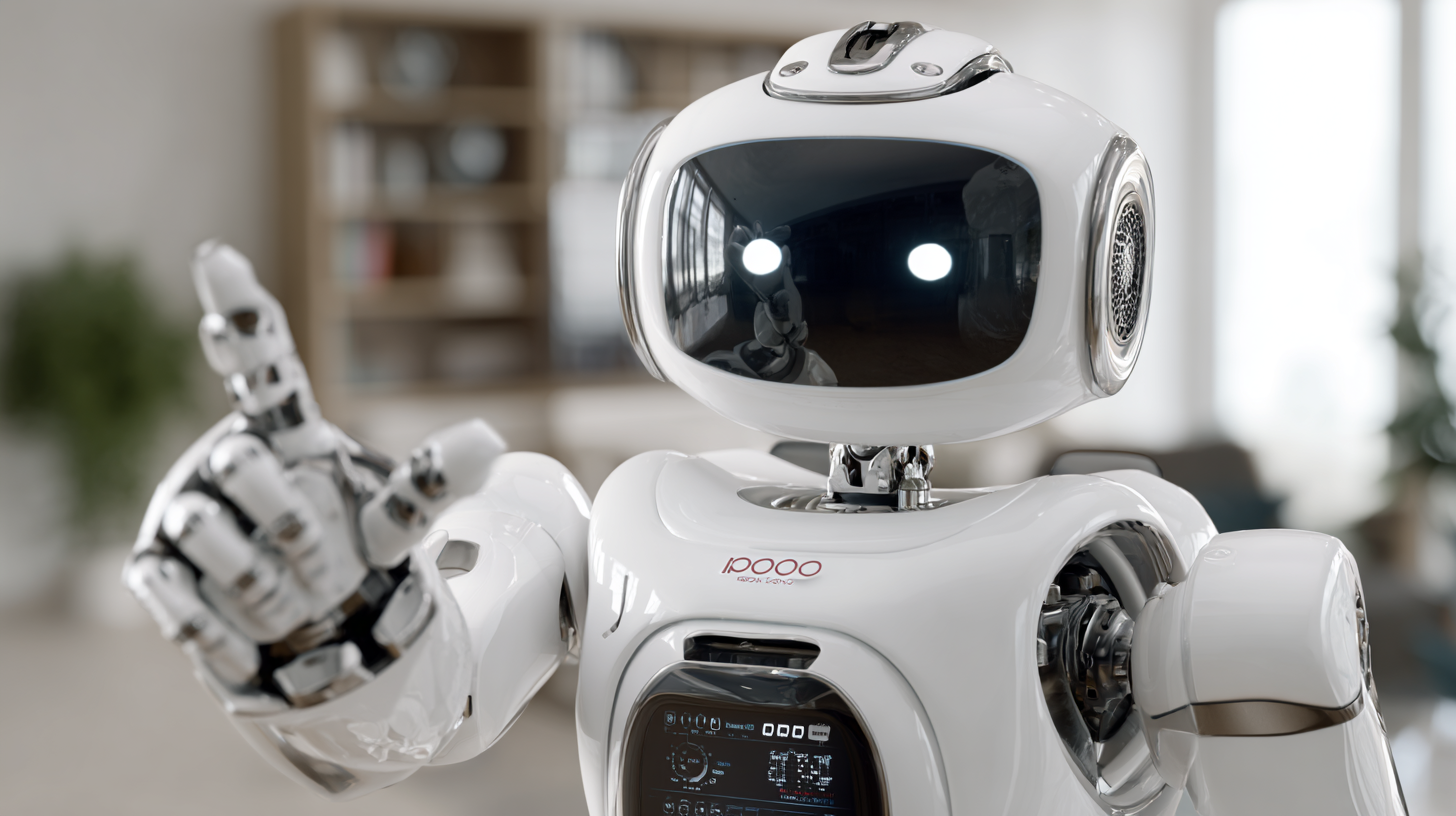As businesses continue to embrace automation and advanced technologies, the demand for commercial robots has surged dramatically. According to a recent report by the International Federation of Robotics, global sales of industrial robots are expected to reach 500,000 units annually by 2025, reflecting an increasing reliance on automation to enhance productivity and efficiency. However, with a plethora of options available in the market, choosing the right commercial robot for your business can be a daunting task. Factors such as application suitability, cost-effectiveness, and vendor support play a crucial role in this decision-making process. In this blog, we will explore five essential digital tips to help you navigate the complexities of selecting the best commercial robot that aligns with your operational needs and long-term business goals.

When considering the integration of commercial robots into your business, understanding your specific needs is crucial. The global market for robotic solutions, such as robotic lawn mowers and air purifiers, is set for significant growth, reflecting an increasing demand for automation in various sectors. Businesses must assess their operational requirements—whether it’s enhancing efficiency in service delivery or improving environmental conditions. A well-informed choice can lead to substantial long-term benefits and cost savings.
Evaluating the landscape of available technologies can provide insights into which type of commercial robot would best serve your business. Not only are specialized robots tailored for tasks like precision mowing and air purification gaining traction, but the competition for advancements in consumer-oriented robotics indicates a vibrant market ready for innovation. This highlights the importance of conducting thorough research into potential investments, ensuring that the robotic solutions align with your strategic objectives and operational realities.

When evaluating the various types of commercial robots available in the market, it is crucial to consider the diverse applications and functionalities they offer. The service robotics sector is experiencing rapid growth, with projected market size expanding significantly from $26.35 billion in 2025 to $90.9 billion by 2032, at an impressive annual growth rate of 19.2%. This surge is driven by increasing demand across sectors like hospitality, healthcare, and cleaning, where robots are utilized for tasks that enhance operational efficiency and customer service.

A key factor influencing your decision should be the type of tasks you need the robot to perform. From robotic assistants in restaurants to autonomous cleaning machines in commercial spaces, each robot category promises to fit specific business needs. With service robots becoming more sophisticated, driven by advancements in artificial intelligence and automation, businesses must assess their requirements carefully and select robots that align with their operational goals. As the industry continues to evolve, having a clear understanding of your unique business context will be essential in choosing the best commercial robot for enhanced productivity and service delivery.
When selecting a commercial robot, understanding the key features that affect its performance is crucial for making an informed investment. First and foremost, the robot's autonomy level plays a significant role. Highly autonomous robots can perform tasks with minimal human intervention, which can enhance efficiency and reduce operational costs. Look for models that utilize advanced sensors and artificial intelligence to navigate and adapt to dynamic environments, ensuring they can handle various tasks seamlessly.
Another essential feature to consider is the payload capacity of the robot. Depending on your business needs, robots designed to carry heavier loads or complex assemblies can greatly impact productivity. Additionally, examine the robot's ease of integration with existing systems, including software compatibility and API availability. A robot that can easily connect with your operational framework not only streamlines implementation but also boosts overall productivity, allowing for flexible modifications as your business grows. Choosing a commercial robot with these key attributes will ensure you harness its full potential for optimal performance.
When selecting the best commercial robot for your business, understanding the relevant industry standards and certifications is paramount. In the realm of robotic technologies, compliance with established regulations not only ensures safety and reliability but can also enhance the operational efficiency of your business. It is crucial to identify which standards apply to your chosen robotic applications, as these guidelines shape the technology's design, functionality, and integration into existing systems.
One pertinent example is the recent MGN 434 (M+F) Amendment 2, which outlines the training and certification standards for Vessel Traffic Service (VTS) personnel recognized by the United Kingdom. This highlights the importance of ensuring that any personnel operating or maintaining robotic systems are adequately trained according to rigorous industry standards. Certification acts as a testament to the competency of your team, providing reassurance that they can effectively engage with advanced technologies. As you conduct research on commercial robots, be sure to inquire about the certifications associated with the products you are considering, ensuring compliance with industry expectations and the highest operational standards.
Incorporating robots into your business operations can significantly enhance efficiency and productivity. However, successful integration requires careful planning and execution. Here are some essential tips to ensure a seamless transition.
First, assess your existing processes to identify areas where automation can bring the most benefit. Understanding the specific tasks that can be optimized will help you choose the right commercial robot technology that aligns with your business goals. Additionally, provide comprehensive training to your staff to familiarize them with the new systems, promoting a smoother adaptation and minimizing resistance.
Another critical consideration is the scalability of the robotic solutions. Choose technologies that can grow with your business and adapt to changing needs over time. Ensuring that the robots can integrate with existing software tools will prevent disruptions in your operations. Adopting these strategies will facilitate a successful integration of robotic systems, paving the way for enhanced operational efficiency in your organization.
